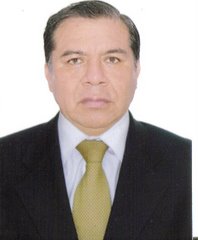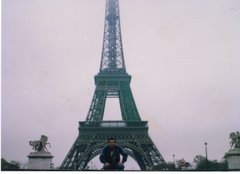Siempre consideré que los creativos más sublimes son los POETAS, porque no narran historias como lo hacen los escritores, que se pueden apoyar leyendo muchos libros, preguntando a los residentes del lugar, es decir, pueden construir su trabajo desde fuera.
En cambio el poeta, tiene que sacar su texto desde dentro, como un mago exprimiendo sus sesos y corazón. Es un parto de pura imaginación.
El poeta, tiene la habilidad debe poner las palabras exactas, lo justo para expresar lo más complejo, en que está sumergido el ser humano.
Claro, cuando leemos algunas poesías, nos parecen dolientes (Vallejo) o fantásticas (Eguren) o épicas (Escorsa). En las declamaciones se percibe con mayor facilidad su grandeza, empero leerlos es un deleite.
Ayer, en la revista Caretas (31-10-2012, Nº 2256), incluyeron como regalo un libro de poesía de César Calvo, un poeta desconocido para la gran mayoría, sin embargo para los conocedores de la literatura, es un gran poeta.
Apoyándome en esta obra, quiero destacar mi admiración para los poetas. Me uno a lo que Mario Vargas Llosa dice de Gonzalo Roce, quién sería el mentor de Carlos Calvo:
“Como los modernistas, erige su mundo compensatorio, de belleza y placer, mediante el exotismo, es decir la fuga del espacio y el mito, la fuga en el tiempo. Lo que está lejos en la geografía o en la historia inevitablemente se baña en la subjetividad… Eso lo hizo Darío con Grecia y Versalles, Eguren con Escandinavia y Germania, Chocano con el Incario y el Virreinato, Lugones con los gauchos, Valle Inclán con México… Pero a diferencia de los modernistas, no es inocente. Se sabe irreal, fabricado con las más implacable de las materias, condenado a ser siempre imagen, sonido, y jamás experiencia vivida”.
Para comprender al ser humano, a la naturaleza, ellos indagan en cada rincón de la mente y la ciudad. Auscultan nuestros latidos y olfatean los hedores de los bares malolientes.
Son cómplices de la soledad y el silencio, en suma viven en un mundo de otra dimensión. Desde allí nos ven desnudos, sin tapujos, y como héroes del martirio se degüellan mostrándonos sus esencias, nuestras esencias.
Suben a los cielos en coches deslumbrantes de belleza derrochando flores de palabras con aromas inmortales. O viven clandestinamente en las ardientes brazas del infierno de estiercol para descifrarnos. Son nuestros acompañantes sinceros en la alegría y la tristeza; en el triunfo o en la derrota gallarda. Conocen los extremos de la humanidad.
Esa grandeza del poeta se refleja en este poema:
VENID A VER EL CUARTO DEL POETA
Venid a ver el cuarto del poeta
Desde la calle
hasta mi corazón
hay cincuenta peldaños de pobreza.
Subidlos.
A la izquierda.
Si encontráis a mi madre en el camino
cociendo su ternura a mi tristeza,
preguntadle
por el amado cuarto del poeta
Si encontráis a Evelina
contemplando morir la privamera,
preguntadle
por mi alma
y también por el cuarto del poeta.
Y si encontráis llorando a la alegría
océanos y océanos de arena,
preguntadle
por todos
y llegaréis al cuarto del poeta:
una silla, una lámpara,
un tintero de sangre, otro de ausencia,
las arañas tejiendo sordos ruidos
empolvados de lágrimas ajenas,
y un papel donde el tiempo
reclina tenazmente la cabeza.
Venid a ver el cuarto del poeta
Salid a ver el cuarto del poeta.
Desde mi corazón
hasta los otros
hay cincuenta peldaños de paciencia.
!Voladlos, compañeros¡
(Si no halláis
entonces
pregutadme
donce estoy encendiendo las hogueras)
Carlos Calvo
Poemas bajo la tierra (1960)
La Pluma del Viento
Lima, 4 de Noviembre de 2012








































